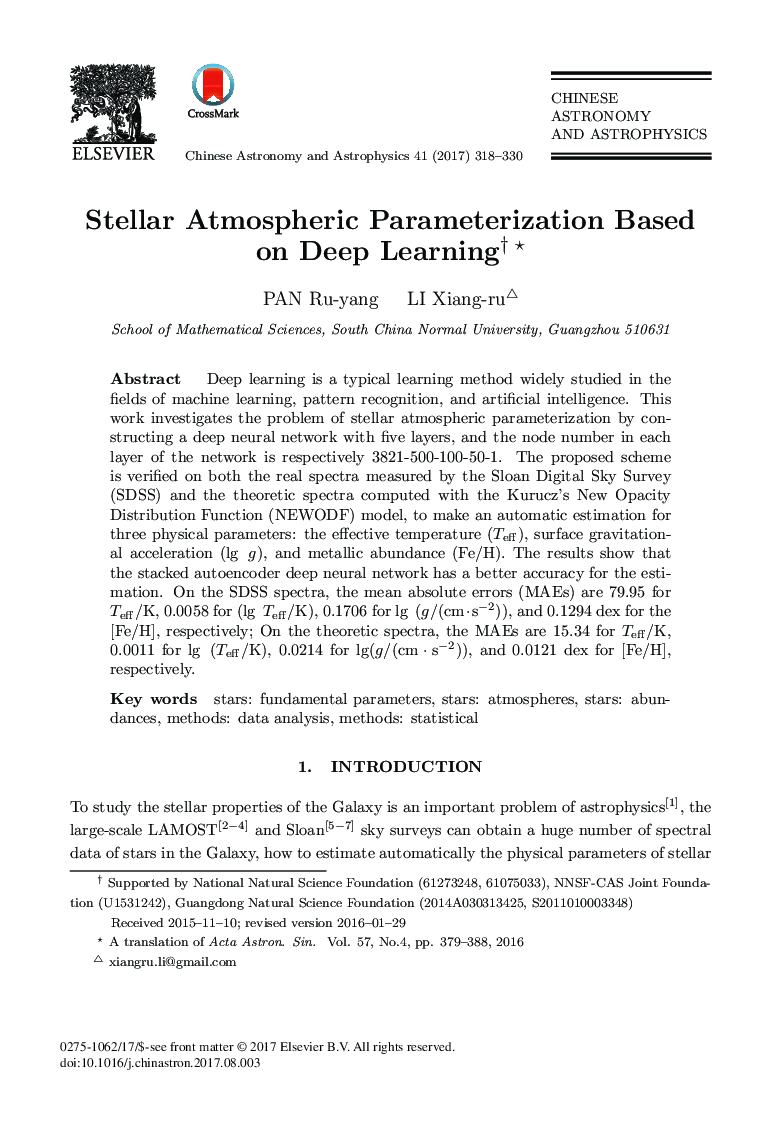| Article ID | Journal | Published Year | Pages | File Type |
|---|---|---|---|---|
| 8133240 | Chinese Astronomy and Astrophysics | 2017 | 13 Pages |
Abstract
Deep learning is a typical learning method widely studied in the fields of machine learning, pattern recognition, and artificial intelligence. This work investigates the problem of stellar atmospheric parameterization by constructing a deep neural network with five layers, and the node number in each layer of the network is respectively 3821-500-100-50-1. The proposed scheme is verified on both the real spectra measured by the Sloan Digital Sky Survey (SDSS) and the theoretic spectra computed with the Kurucz's New Opacity Distribution Function (NEWODF) model, to make an automatic estimation for three physical parameters: the effective temperature (Teff), surface gravitational acceleration (lg g), and metallic abundance (Fe/H). The results show that the stacked autoencoder deep neural network has a better accuracy for the estimation. On the SDSS spectra, the mean absolute errors (MAEs) are 79.95 for Teff/K, 0.0058 for (lg Teff/K), 0.1706 for lg (g/(cm·sâ2)), and 0.1294 dex for the [Fe/H], respectively; On the theoretic spectra, the MAEs are 15.34 for Teff/K, 0.0011 for lg (Teff/K), 0.0214 for lg(g/(cm · sâ2)), and 0.0121 dex for [Fe/H], respectively.
Keywords
Related Topics
Physical Sciences and Engineering
Physics and Astronomy
Astronomy and Astrophysics
Authors
Pan Ru-yang, Li Xiang-ru,
